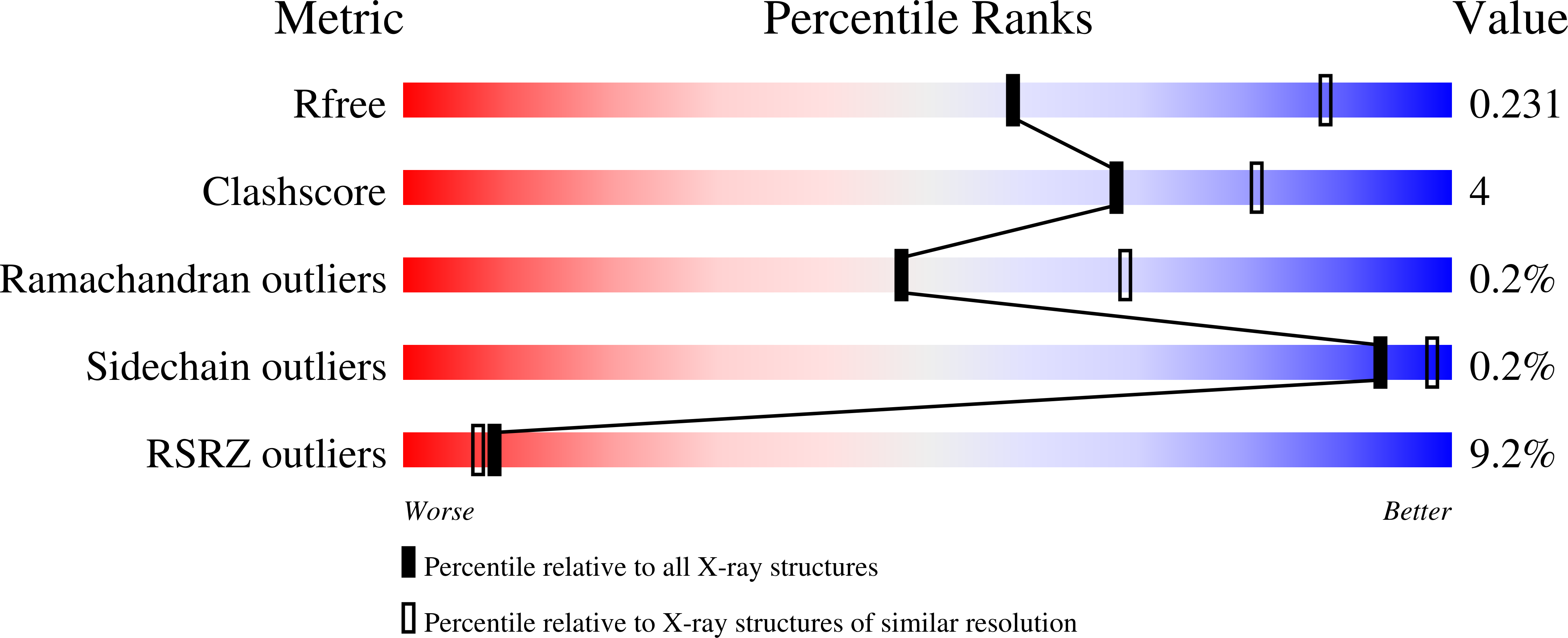Extensive flavivirus E trimer breathing accompanies stem zippering of the post-fusion hairpin.
Medits, I., Vaney, M.C., Rouvinski, A., Rey, M., Chamot-Rooke, J., Rey, F.A., Heinz, F.X., Stiasny, K.(2020) EMBO Rep 21: e50069-e50069
- PubMed: 32484292
- DOI: https://doi.org/10.15252/embr.202050069
- Primary Citation of Related Structures:
6S8C - PubMed Abstract:
Flaviviruses enter cells by fusion with endosomal membranes through a rearrangement of the envelope protein E, a class II membrane fusion protein, into fusogenic trimers. The rod-like E subunits bend into "hairpins" to bring the fusion loops next to the C-terminal transmembrane (TM) anchors, with the TM-proximal "stem" element zippering the E trimer to force apposition of the membranes. The structure of the complete class II trimeric hairpin is known for phleboviruses but not for flaviviruses, for which the stem is only partially resolved. Here, we performed comparative analyses of E-protein trimers from the tick-borne encephalitis flavivirus with sequential stem truncations. Our thermostability and antibody-binding data suggest that the stem "zipper" ends at a characteristic flavivirus conserved sequence (CS) that cloaks the fusion loops, with the downstream segment not contributing to trimer stability. We further identified a highly dynamic behavior of E trimers C-terminally truncated upstream the CS, which, unlike fully stem-zippered trimers, undergo rapid deuterium exchange at the trimer interface. These results thus identify important "breathing" intermediates in the E-protein-driven membrane fusion process.
Organizational Affiliation:
Center for Virology, Medical University of Vienna, Vienna, Austria.














